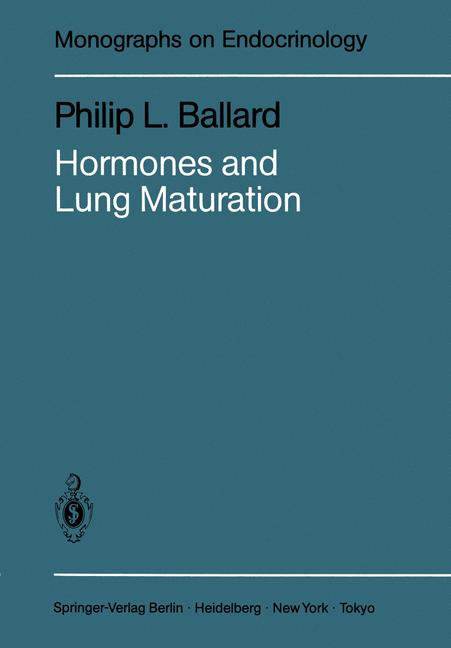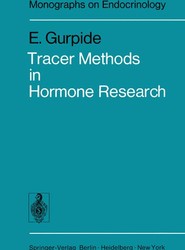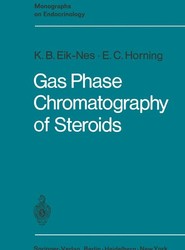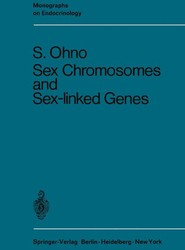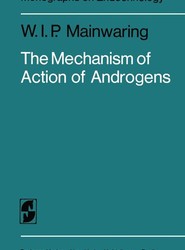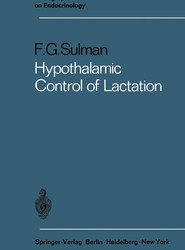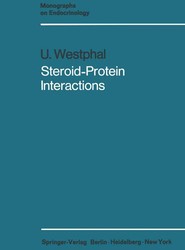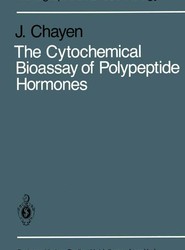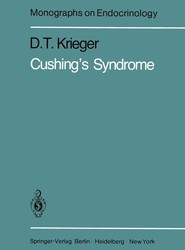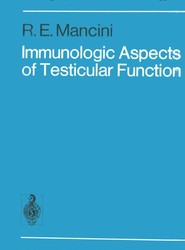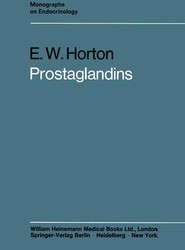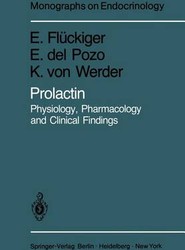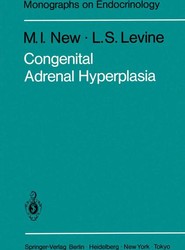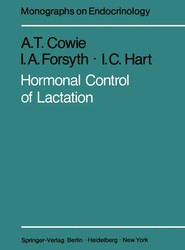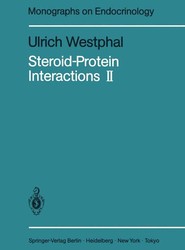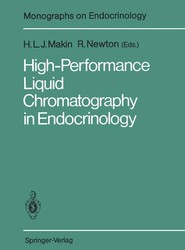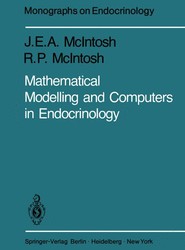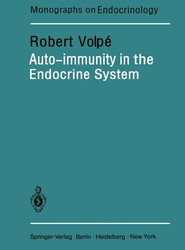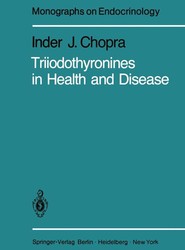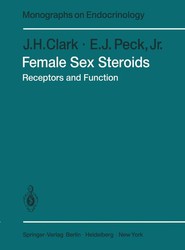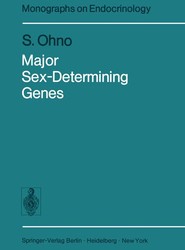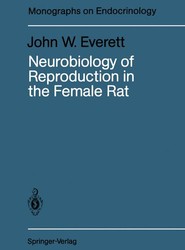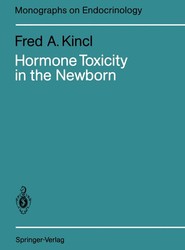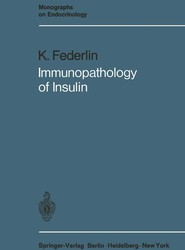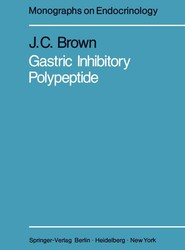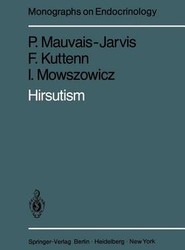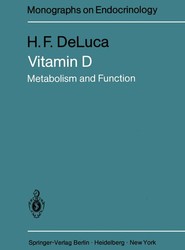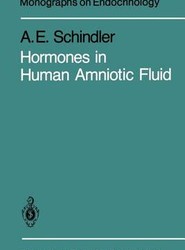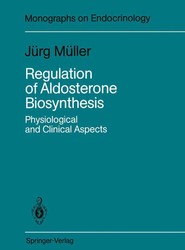(To see other currencies, click on price)
MORE ABOUT THIS BOOK
Main description:
As I reflect on the evolution of this book, I am struck by the differences be tween my early conceptions and the final product. When I was first ap proached by Springer-Verlag regarding a monograph on my interests in the area of fetal lung development, I imagined that it would be relatively easy to summarize my contributions, plus the work of other investigators as needed for proper perspective. This rather naive idea was abandoned as I prepared my initial outlines for the monograph. I quickly realized that con tributions from my laboratory are not sufficient for telling the story of "hormones and lung maturation". The result of this decision is a longer and more heavily-referenced book than I originally envisioned. Although I have attempted to discuss in considerable detail most aspects of hormones and the fetal lung, I know with certainty that I have not in cluded all relevant references in each area. In most of these instances this reflects my impatience or lack of diligence, and I offer my apologies to those investigators whose work has been so omitted. In some situations published work has not been cited in a deliberate decision to limit the breadth of discussion or, rarely, due to my judgment of major shortcom ings in experimental design or execution.
Contents:
1 Lung Development.- 1.1 Introduction.- 1.2 Structural Development.- 1.2.1 Architecture and Pattern of Growth.- 1.2.2 Stages of Growth.- 1.2.2.1 Embryonic.- 1.2.2.2 Glandular.- 1.2.2.3 Canalicular.- 1.2.2.4 Saccular.- 1.2.2.5 Alveolar.- 1.2.3 Cells of the Acinus.- 1.2.3.1 Type I Cells.- 1.2.3.2 Type II Cells.- 1.2.3.3 Fibroblasts.- 1.2.3.4 Endothelial Cells.- 1.2.3.5 Macrophages.- 1.3 The Surfactant System.- 1.3.1 Discovery/Physiologic Function.- 1.3.2 Ontogeny.- 1.3.3 Composition.- 1.3.4 Life Cycle.- References.- 2 Glucocorticoid Effects in Vivo.- 2.1 Historical Perspective.- 2.2 Experimental Approaches.- 2.3 Morphology.- 2.4 Alveolar Surfactant.- 2.5 Pulmonary Function and Viability.- 2.6 Biochemical Effects.- 2.6.1 Phospholipid Synthesis.- 2.6.1.1 Precursor Incorporation.- 2.6.1.2 Tissue Phospholipid Content.- 2.6.1.3 Enzymes.- 2.6.2 Other Proteins.- 2.6.3 Glycogen.- 2.6.4 DNA.- 2.7 Responses in Other Tissues.- 2.8 Effect of Gender.- 2.8.1 Differences Observed.- 2.8.2 No Differences Found.- 2.8.3 Androgen.- 2.9 Summary.- References.- 3 Glucocorticoid Receptor.- 3.1 General Properties.- 3.1.1 Distribution.- 3.1.2 Physiochemical and Binding Properties.- 3.2 Specific Properties.- 3.2.1 Sulfhydryl Groups.- 3.2.2 Corticosteroid Affinity and Specificity: Species Differences.- 3.2.3 Distribution Among Cell Types.- 3.2.4 Ontogeny.- 3.3 Evidence for Receptor Mediation of Corticosteroid Effects.- 3.3.1 Studies in Cultured Lung.- 3.3.2 In Vivo Studies.- 3.4 Summary and Conclusions.- References.- 4 Role of Endogenous Corticosteroids.- 4.1 Temporal Associations.- 4.1.1 Plasma and Amniotic Fluid Corticosteroids.- 4.1.1.1 Sheep.- 4.1.1.2 Rat and Mouse.- 4.1.1.3 Rabbit.- 4.1.1.4 Non-human Primates.- 4.1.1.5 Human.- 4.1.1.6 Other Species.- 4.1.2 Biochemical Correlations.- 4.1.2.1 Rabbit Studies.- 4.1.2.2 Sheep Studies.- 4.2 Experimental Manipulations.- 4.2.1 Increased Corticosteroid Levels.- 4.2.2 Ablation Procedures.- 4.2.3 Studies with Cultured Lung Tissue.- 4.3 Sources of Increased Corticosteroids.- 4.3.1 Steroidogenesis.- 4.3.2 Plasma Binding.- 4.3.3 Tissue Uptake and Responsiveness.- 4.3.4 Cortisone: Cortisol Interconversion.- 4.3.4.1 Metabolism in Placenta and Membranes.- 4.3.4.2 Metabolism in Fetal Lung.- 4.4 Clinical Evidence.- 4.5 Summary and Conclusion.- References.- 5 Antenatal Glucocorticoid Therapy: Clinical Effects.- 5.1 Respiratory Distress Syndrome.- 5.1.1 Occurrence.- 5.1.2 Pathophysiology.- 5.2 Prevention of RDS: Factors Influencing Efficacy of Therapy.- 5.2.1 Effect Established.- 5.2.1.1 Gestational Age.- 5.2.1.2 Therapeutic Agent, Treatment Interval and Dose.- 5.2.1.3 Interval from Initiation of Therapy to Birth.- 5.2.2 Probable Effect on Efficacy.- 5.2.2.1 Gender and Racial Origin.- 5.2.2.2 Asphyxia.- 5.2.2.3 Multiple Birth.- 5.2.2.4 Prolonged Rupture of Membranes.- 5.2.3 Insufficent Evidence Regarding Efficacy.- 5.2.3.1 Maternal Diabetes.- 5.2.3.2 Rhesus Sensitization.- 5.2.3.3 Cesarean Section.- 5.2.3.4 Tocolytics.- 5.2.3.5 Toxemia (Hypertension/Edema/Proteinuria Syndromes).- 5.2.4 Summary and Recommendations.- 5.3 Other Effects of Therapy.- 5.3.1 L/S Ratio.- 5.3.2 Risks and Benefits.- 5.3.2.1 Potential Risks.- 5.3.2.2 Established Benefits.- 5.3.3 Other Observations.- 5.3.3.1 Retinopathy of Prematurity.- 5.3.3.2 Skin.- 5.3.3.3 Fetal Breathing.- 5.4 Follow-up After Glucocorticoid Therapy.- 5.4.1 General Growth and Development.- 5.4.2 Lung Development.- 5.4.3 Immunological Development.- 5.5 Summary.- References.- 6 Antenatal Glucocorticoid Therapy: Hormone Concentrations.- 6.1 Concentration of Administered Corticosteroids.- 6.1.1 Betamethasone.- 6.1.2 Dexamethasone.- 6.1.3 Methylprednisolone.- 6.1.4 Cortisol.- 6.1.5 Comparison of Regimens.- 6.1.6 Maternal-Fetal Distribution.- 6.1.7 Placental Metabolism.- 6.1.8 Time Course Considerations.- 6.2 Suppression of Endogenous Cortisol.- 6.2.1 Maternal.- 6.2.2 Fetal.- 6.2.3 Adrenocortical Responsiveness to Stress.- 6.3 Glucocorticoid Activity in Fetal Plasma.- 6.3.1 Receptor Affinity.- 6.3.2 Calculations.- 6.3.3 Time Course.- 6.3.4 Maximal Levels.- 6.4 Effect on Other Endogenous Hormones.- 6.5 Summary and Conclusions.- References.- 7 Thyroid Hormones: Effects and Binding.- 7.1 Effects in Vivo.- 7.1.1 Fetal Treatment.- 7.1.2 Maternal Treatment.- 7.1.3 Postnatal Effects.- 7.1.4 Fetal Thyroidectomy.- 7.1.5 Ontogeny of Endogenous Thyroid Hormones.- 7.2 Uptake and Metabolism.- 7.3 Nuclear T3 Receptor.- 7.3.1 Species Distribution.- 7.3.2 Dose Response of Binding.- 7.3.3 Kinetics of Binding.- 7.3.4 Release and Inactivation of Receptor.- 7.3.5 Ontogeny.- 7.3.6 Hormonal Regulation.- 7.3.7 Occupancy by Endogenous Thyroid Hormones.- 7.4 Effects in Culture.- 7.4.1 Biochemical Responses.- 7.4.2 Evidence for Receptor Mediation.- 7.5 Human Studies.- 7.5.1 Development of Thyroid Function.- 7.5.2 Thyroid Function and RDS.- 7.5.3 Prenatal Treatment with Thyroid Hormone.- 7.6 Conclusions.- References.- 8 Beta-Adrenergic Agonists.- 8.1 Effects.- 8.1.1 Surfactant Release.- 8.1.1.1 In Vivo Studies.- 8.1.1.2 Cultured Lung.- 8.1.2 Fluid Reabsorption.- 8.1.2.1 Fluid Dynamics.- 8.1.2.2 Treatment with Catecholamines in Vivo.- 8.1.2.3 Studies in Isolated Cells.- 8.1.3 Physiologic Relevance.- 8.1.3.1 Experimental Approaches.- 8.1.3.2 Labor and Birth.- 8.1.3.3 Clinical Observations.- 8.2 Receptor.- 8.2.1 Binding Properties.- 8.2.2 Cellular Distribution.- 8.2.3 Concentration.- 8.2.3.1 Ontogeny.- 8.2.3.2 Hormonal Influence.- 8.2.3.3 Effect of Gender.- 8.2.4 Coupling to Adenylate Cyclase.- 8.3 Conclusions and Perspectives.- References.- 9 Other Hormones.- 9.1 Prolactin.- 9.1.1 Background.- 9.1.2 Clinical Correlations.- 9.1.3 Effects in the Lung.- 9.1.4 Mechanism.- 9.1.5 Conclusions.- 9.2 Estradiol.- 9.2.1 Clinical Correlations.- 9.2.2 Effects.- 9.2.3 Mechanism of Action.- 9.3 Epidermal Growth Factor.- 9.4 Thyrotropin-Releasing Hormone.- 9.5 Fibroblast Pneumonocyte Factor.- 9.6 Insulin.- 9.6.1 Diabetes and Lung Maturation.- 9.6.2 In Vivo Models.- 9.6.2.1 Alloxan.- 9.6.2.2 Streptozotocin.- 9.6.2.3 Fetal Infusion.- 9.6.3 Studies in Culture.- 9.6.4 Mechanism.- 9.6.5 Conclusions and Speculations.- References.- 10 Hormone Interactions.- 10.1 Thyroid Hormones and Corticosteroids.- 10.1.1 In Vivo.- 10.1.2 In Cultured Lung.- 10.1.3 In Other Tissues.- 10.1.4 Mechanism in Lung.- 10.2 cAMP and Glucocorticoids.- 10.2.1 In Cultured Rat Lung.- 10.2.2 In Other Tissues.- 10.3 cAMP and T3.- 10.4 Multi-Hormonal Regulation: An Overview.- 10.5 Combined Hormone Therapy.- References.
PRODUCT DETAILS
Publisher: Springer (Springer-Verlag Berlin and Heidelberg GmbH & Co. K)
Publication date: December, 2011
Pages: 372
Weight: 641g
Availability: Available
Subcategories: Endocrinology, Respiratory Medicine
From the same series

